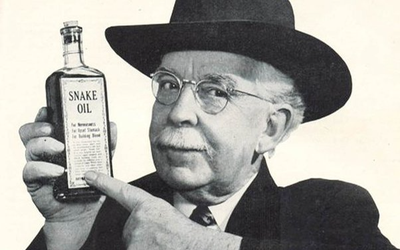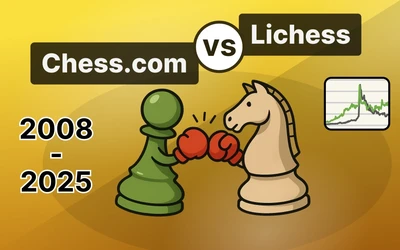
Why are tactics critical for chess improvement at all levels?
Tatics are what win games at the beginnings of our chess journey. However, the stronger we get, the less important tactics become - or do they?Introduction
Tactics are a huge part of a chess game. They are everywhere - basic cheapos in the opening, brilliant combinations in the middlegame, even in endgames with that sneaky threat that wins a crucial tempo. In this post, I will deal with the following questions:
- What are tactics?
- Why are tactics the main area of improvement for beginners?
- How to work on tactics?
- Why are tactics training critical for all levels, even Grandmasters?
What are tactics?
There are many definitions of tactics everywhere but, for the sake of completeness, I will give my own definition here: A tactic is a sequence of forcing moves that, once completed, yield an advantage for the offensive side, when in comparison with the position pre-tactic. It is not strictly necessary but tactics usually begin with momentary material sacrifices, to be regained with interest once the sequence is over.
It is crucial to pay attention to the forcing moves aspect of a tactic. If it were not for this, it would be much more difficult to select candidates when trying to find how the tactic, in a given position, could begin.
 A tactic. White to play and win. Pinto, José - Freitas, Tomás, Portuguese National Youth Championship U16 2023-2024
A tactic. White to play and win. Pinto, José - Freitas, Tomás, Portuguese National Youth Championship U16 2023-2024
Why are tactics the main area of improvement for beginners?
When we start learning chess, we do not know much about the game. We know how the pieces move and that the objective is to checkmate the opponent's king. With time, we start to learn opening principles, some positional ideas, some theoretical endgames. However, the advantages that these things give to a player pale in comparison with being a piece up. Would you rather start a chess game with pawns already on e4 and d4, or with knight odds for the opponent?
Tactics are simple to understand (hard to master!) and yield much more value than anything else in chess - thus, it is the most basic advice given to players that are just starting out - improve your tactical ability! Lets see how.
How to work on tactics?
There are many workbooks on tactics and there are many websites that make tactics training available - lichess, chess.com, chessTempo, to name a few. Before I tell you what I my advice is though, we need to discuss what skill we are strengthening, when we improve at tactics.
When we find a tactic in a given position, we are employing something called Pattern Recognition. This term is important. It neatly describes what is going on in our brain, and marks a key difference between tactics and some other knowledge like theoretical endgames (which are memorized). Tactics are something that is recognised by the brain, without conscious effort.
Pattern Recognition
Patterns around us are constantly being recognised by the brain. In his bestseller book Thinking, Fast and Slow, Nobel Prize in Economics and psychologist Daniel Kahneman discusses how the brain works in two distinct ways, which he calls System 1 and System 2, with System 1 being responsible for unconscious thought and reactions (such as automatically moving a hand away from something hot), and System 2 for logical conscious thinking. When we talk about tactics, we are talking about System 1 in action. Candidate search in Calculation, for example, is an example of System 2 being used. I will write about this in a future post, in which I will discuss Calculation more in depth.
Actions of System 1 are triggered by the recognition of patterns seen previously in our world experience. Neurologically speaking, the more times these patterns appear as inputs to the brain, the stronger the connections between neurons will be, which makes the pattern more easily spotted (similar to how habit formation works). This is obviously an oversimplification, but it is all we need to understand in order to know what to aim for when we work on tactics.
We want for our brain to recognise tactical patterns as quickly, and without conscious thought, as possible. For this, we need to see the pattern many, many times in front of us, which means solving a lot of puzzles. How to do this? Well, any of the options displayed in the begging of the topic are fine, but I suggest the following:
- Use lichess puzzles trainer.
- Check your puzzles rating. Lichess automatically assigns you tactics based on your rating, but we do not want that. We want to train recognizing the basic patterns, not long variations that are more similar to calculation than actual tactics.
- Do the math, and use lichess feature to lower the puzzle rating so every puzzle is around the 1700-2000 rating mark. Around this level is where the tactics displayed are sequences of two or three forcing moves, which highlight a pattern. If your normal puzzle rating is lower than this, skip this step.
- Untick the "rated" option, as we want to stay at the same level every time.
 My puzzle training setup. 1...Rxg2! 2.Nxg2 h2-+ is a nice pattern to know.
My puzzle training setup. 1...Rxg2! 2.Nxg2 h2-+ is a nice pattern to know.
Solve puzzles every day. Create this habit. 5 minutes at least, but up to 15 min is the ideal duration. More is totally fine, but I find it harder to keep the habit if you do not actively like solving chess problems.
Why are tactics training critical for all levels, even Grandmasters?
We now know that we should stuff our brain with as many tactical patterns as possible. The thing is, there are not many of them, maybe around twenty, depending on the names given to them (some examples being the pin, clearance, skewer, etc). This should mean that a seasoned player, say 2000 FIDE rating, probably has come across all of them and knows them all well enough right? Wrong!
Knowing the existence of all existing tactical ideas is not enough. We need to instantly recognise their existence in a position without even thinking about them. We can always be better at quickly spotting tactics, which means that players of all levels should work on this.
Once, I discussed this exact subject with a student, rated around 2000 at the time. They told me that they started doing 15 minute sessions, and solved 40 problems, which means an average of 22.5s per exercise. Out of curiosity, I decided to also do a 15 minute session and see how well I fared. I solved around 120 (7.5s/tactic). Better, but Nakamura would solve maybe 300 (a random number but you get the idea).
You could be thinking "What is the point though? Why would his student work on tactics, if the time difference is just 15s? Why would they work hours and hours improving their tactical ability, just to save 15s of time in a game, for each tactic that comes along? Isn't it more efficient to work on openings, or study endgames?".
The problem with this line of thinking is that it ignores all the wasted time used calculating lines that are refuted by a simple tactic in the first couple of moves. Consider the following position, from Chen, Zhi - IM Sousa, André, Menorca Open 2024:
 What should Black play? 17...Qd5 or 17...Qd8?
What should Black play? 17...Qd5 or 17...Qd8?
The position is complex. Both options seem to have their pros and cons. However, if you have a keen eye for tactics, you might rapidly spot that 17...Qd8?? loses instantly to 18.Rxc7+! with mate soon to follow. If the tactic is not spotted at all, Black loses. If the tactic is spotted 10 minutes deep into the calculation of the lines after 17...Qd8, 10 minutes were wasted.
This becomes even worse when positions which contain tactical possibilities are not on the board but are rather the product of variations calculated and visualized in our minds. Realistically, when we calculate, we cannot afford to give many of the positions in our heads more than a couple of seconds (and some people do not even pause for that long). If we are not able to spot tactics instantly (especially because during a game noone is telling us there is a tactic to find), we will waste a lot of time in variations that simply do not work tactically.
Conclusion
In this post, I discussed the importance of being able to very quickly see tactical patterns that come up in our games. It is obviously beneficial for beginners, but it is also very important for even masters, as it is the foundation of good calculation. Also, it is critical for good time management. If you are constantly struggling with time trouble, maybe you need to work on tactics, as you are wasting a lot of time in lines that have simple refutations, which are only spotted afterwards (there could, of course, be other reasons. I will write about this in the future) and, because you never lose a game by actually falling for a tactic, you fail to make the connection.
So do not neglect your tactics. Learning openings is all the rage nowadays, but 90% (a totally made up number i just came up with, but it is my gut feeling based on my experience with many students) of chess games of all levels are decided on tactics. Good luck!
You may also like
 TotalNoob69
TotalNoob69The REAL value of chess pieces
... according to Stockfish OnTheQueenside
OnTheQueensideHow many women have beaten super-GMs?
It's happened over 50 times! IM HelloItsDmitri
IM HelloItsDmitriWhat are pawns used for in chess?
It has been said that pawns are the soul of chess. But what exactly is the job of the weakest, yet m… CM HGabor
CM HGaborHow titled players lie to you
This post is a word of warning for the average club player. As the chess world is becoming increasin… IM HelloItsDmitri
IM HelloItsDmitriHow should we play middlegames with opposite coloured bishops?
For many people, opposite coloured bishops mean that a draw is the likely outcome of the game. Lets … ChessMonitor_Stats
ChessMonitor_Stats